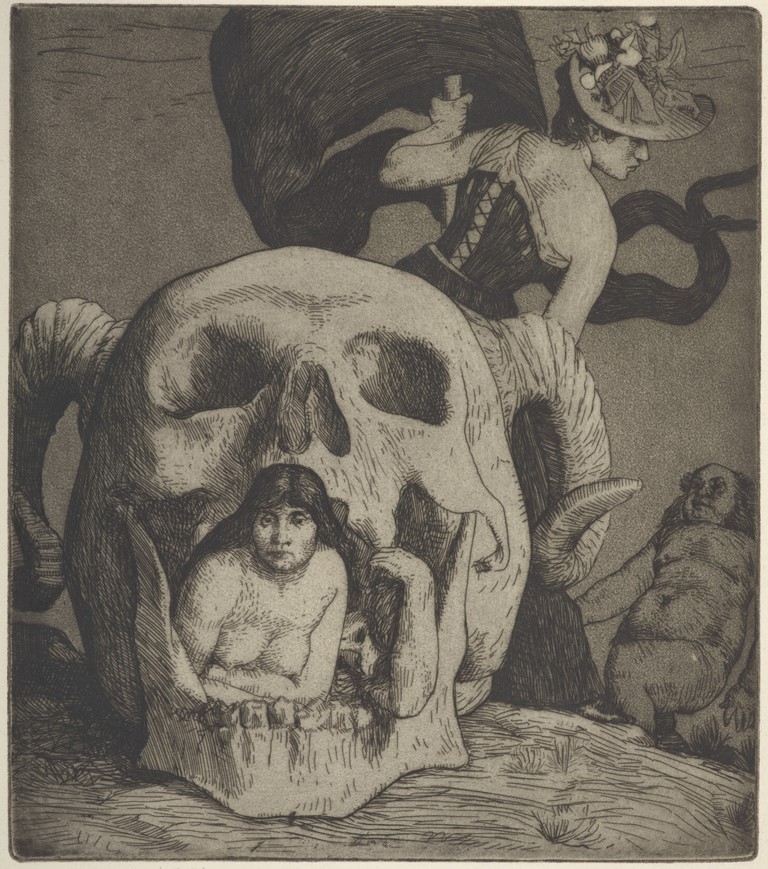Scottish National Gallery – William Strang exhibition opens today
A captivating and diverse selection of prints and drawings by the great Scottish artist William Strang will feature in a new display at the Scottish National Gallery this autumn. Strang, who was born in Dumbarton in 1859, was a highly skilled and imaginative printmaker and painter, who produced one of the most innovative and varied bodies of original etched work by any Scottish artist of the period. Fair Faces, Dark Places will include a selection of over 30 key works from the Gallery’s extensive collection of works on paper by Strang, spanning the breadth of his career.
Strang, with fellow Scots David Young Cameron, Muirhead Bone and James McBey (collectively known as ‘The Big Four’), was instrumental in stimulating an international revival of original printmaking during the late nineteenth and early twentieth-century. After serving a brief apprenticeship with a Clydeside shipbuilding firm, he moved to London in 1876, where he enrolled at the newly opened Slade School of Art. There he studied under the realist artist Alphonse Legros (1837–1911), whose teaching remained a powerful influence for the rest of his life. On completing his studies, Strang became Legros’s assistant in the printmaking class, after which he worked for two decades predominantly as an etcher. Though he went on to achieve recognition as a painter, printmaking remained central to Strang’s work until his death in 1921.
The works on show in Fair Faces, Dark Places will reflect Strang’s versatility as an artist, as well as his consummate technical skill. His subjects ranged from those based in reality – highlighting the stark poverty and social injustice of Victorian Britain with powerful images such as Despair (1889) – to the truly fantastical, including strange and macabre allegories such as Grotesque (1897), which was inspired by a dream and reflects the influence of Goya, European Symbolist painting and the celebrated illustrator Aubrey Beardsley (1872–1898).
Strang was also an advocate for the revival of the hand-printed book and made many narrative illustrations for books, periodicals and his own Scots dialect ballads. On show will beToomai of the Elephants (1900) a fine example of his illustrations for Rudyard Kipling’s short stories, as well as examples of his etchings of subjects from Miguel de Cervantes’s Don Quixote.
He was also a prolific portraitist who produced memorable images of leading artistic and literary figures, as well as his family and friends. Inspired by Rembrandt, he made many self-portraits, including one example on show here in which he typically depicts himself surrounded by a printing press, prints in various states, bottles of ink and other tools of his trade.
The display will also include two portraits of Strang’s most famous sitter, the poet and novelist Thomas Hardy (1840–1928), offering a fascinating comparison between a pencil study made with tremendous honesty, directly from life, and the finished, more famous (and more flattering) etched version for which it was as a preparatory study.
Undoubtedly one of the innovators of the modern style in Britain, Strang’s striking images fuse a range of influences from his teacher, Legros, to old masters such as Rembrandt, Dürer, Holbein and Goya. Throughout his career, right up until his sudden death from heart failure aged 62, he was continuously experimenting with technique and subject. According to Strang “there are no beauties but technical ones”; for him, beauty lay in fine draughtsmanship, technical skill, sincerity and authenticity.
FAIR FACES, DARK PLACES: PRINTS AND DRAWINGS BY WILLIAM STRANG (1859–1921)
18 October 2014 – 15 February 2015
Scottish National Gallery, The Mound, Edinburgh EH2 2EL
Admission free | 0131 624 6200
#StrangPrints
